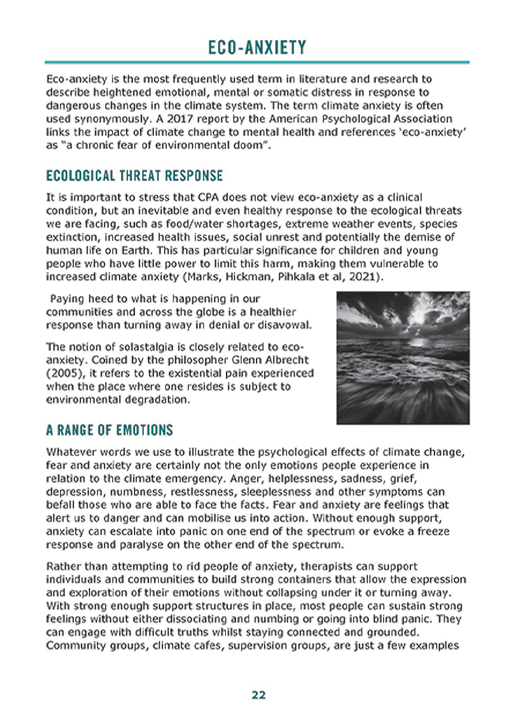4.1 Solastalgia
The term solastalgia is, as mentioned before, closely related to eco-anxiety. It comes from the Latin word ‘solacium’ (comfort) and the Greek word ‘algos’ (pain) and is used to indicate a specific type of distress caused by the climate crisis. Namely the pain that people experience when beloved aspects of their environment are damaged by the changing climate, for example the loss or suffering of animal or plant species, a home destroyed by fire, wind or water, the felling or die-back of local trees. Shelot Masithi’s references to the mountains, waterfalls, streams and rivers of her childhood are an example of solastalgia. The term applies to pain from losses that have already occurred, and also from losses that people fear will happen in the future. The first feeds into the second. One strength of this term is that, through its emphasis on grief from real losses, solastalgia clarifies that eco-anxiety and related distress are closely linked to real-world happenings.
Activity 4 A range of emotions
If you haven’t already, read the summary of the House of Lords submission and the CPA’s information on eco-anxiety.
Concern about climate change and environmental issues is highly prevalent across the UK (and worldwide) and increasingly associated with a range of painful eco-emotions, functional impairment, disturbing thoughts and feeling betrayed by governments who are failing to act. (…) Although painful, these emotions are realistic responses to the realities of today’s world. Depending on how we work with emotions, they have the potential to be either significant catalysts for change, or barriers leading to disengagement, avoidance, or paralysis.
Make a list of all the different feelings and emotions that could be associated with the climate crisis. Do you think eco-anxiety is useful term? What are your preferred terms to describe anxious feelings about climate and ecological destruction?

